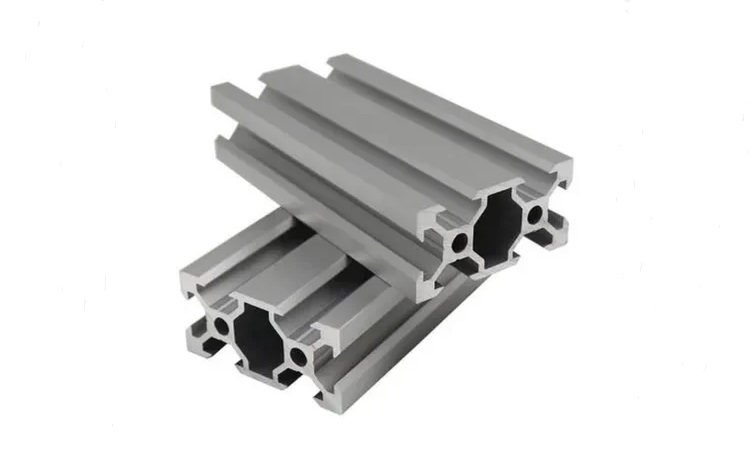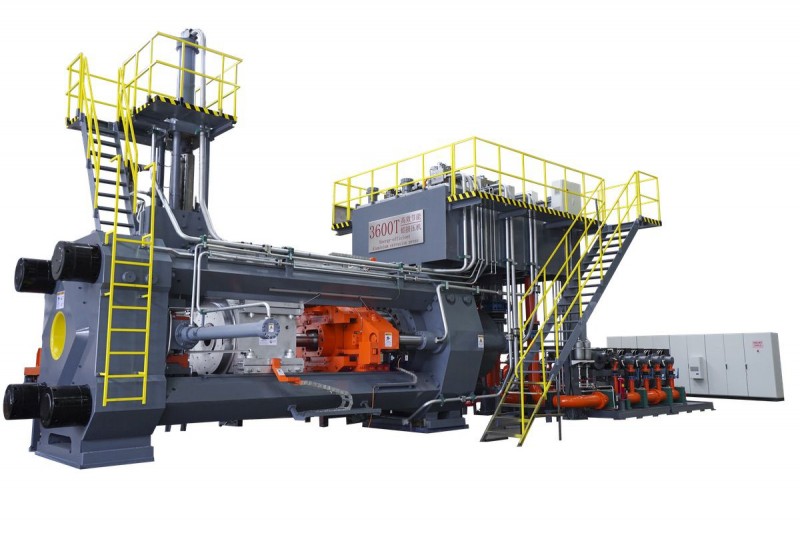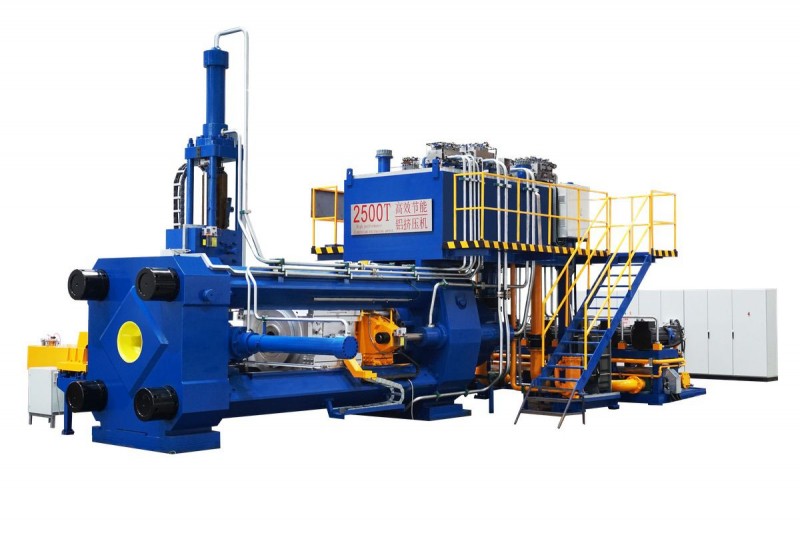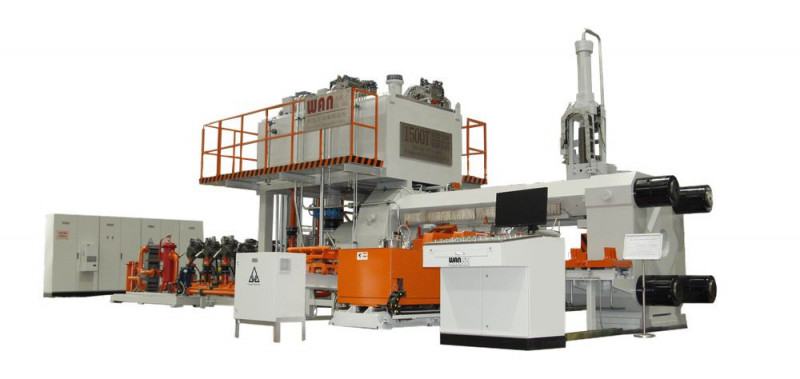Aluminum extrusion has emerged as an essential manufacturing method in different industries such as construction, automotive, and aerospace. Aluminum extrusion refers to the process through which complex cross-sectional profiles with preferred geometrics and physical characteristics are made from aluminum billets.
Different techniques have been developed to improve the quality of extruded products because of the significance of aluminum extrusion. Temperature and time are two critical parameters that affect the quality and properties of aluminum extrusions.
Herein, we focus on temperature and time control in aluminum extrusion, explicitly discussing how different factors influence the process and strategies to optimize these factors.

On that note, aluminum extrusion significantly depends on temperature control throughout all stages. See below!
The first step, in the process is billet heating, where raw aluminum material is transformed into billets and undergoes controlled temperature increase. Induction heating is a used technique that ensures temperature control while minimizing energy consumption.
In this method electromagnetic fields are used to generate heat in the billet. Achieving temperatures throughout the billet is crucial. Requires a delicate balance between the electromagnetic fields and thermal properties.
Incorrect billet heating can result in temperatures and defects which affect the quality of products. This process typically takes around two to three hours to reach the temperature required for extrusion.
Maintaining temperature ranges during this stage is essential for results and achieving desired extrusion properties for aluminum.
After billet heating die preheating becomes the step in temperature management. At this stage it's important for the die to reach a temperature as that of the billet. Furnaces or electric heaters are used methods for die preheating. Heated dies generally produce high quality extrusions.
Incorrect die temperatures can lead to issues such, as surface defects, weak spots and dimensional errors.
Usually the die is heated for one to two hours to ensure it reaches the temperature for accurately shaping aluminum. Once heated this coordination of temperatures allows for a transition, from the billet, to the product.
One of the considerations involved in extrusion is the temperature at which the aluminum needs to be pushed through a die to produce a profile of interest. The right temperature for extrusion might vary from alloy to alloy, as well as from one intended final property to another. It is important at this stage to exercise precise control in achieving the structural and surface properties specified for construction components.
Surface finishes from these low temperatures tend to give unrefined profiles due to oxidation caused on the surface finish reducing its quality.
This process of controlling extrusion temperature usually takes from 1-2 hours, therefore ensuring close monitoring to the flow of melted aluminum and determining if the required shape has been achieved. Such a controlled heat procedure is pivotal on determining success within an extrusion process and subsequently the production quality of construction materials.
Quenching, on the other hand, is the final step in the extrusion process whereby the extruded profile is rapidly cooled to harden the outer surface. Its associated purpose comes in where the mechanical properties such as the strength, toughness, and durability too are achieved.
The specified type of alloy and the application main quenching processes are air, water, and polymer quenching with the specified advantages.
On a similar line, good cooling is necessary because the final extruded materials have to be of uniform hardness as well as being dimensionally accurate. Material under extrusion usually takes between 30 minutes and an hour to cool after working on a similar material.
This is the reason of why the identification of the correct type of quenching process and duration is very important in aluminum components, since it basically influences its final characteristics, conforming these components with required standards in the construction sector.
Some kinds of aluminum alloys need an additional aging process after extrusion to enhance their properties even more. The aging process involves heating extruded parts at a controlled temperature for some time. It increases strength and hardness that ensures structural integrity necessary for construction purposes in aluminum materials through precipitation hardening, known as precipitation strengthening or age-hardening.
Aging durations can vary but are typically over 4 hours, allowing for the gradual development of desired mechanical properties. This delicate phase in the temperature control process further modifies aluminum’s characteristics to suit today’s building requirements stringently.
Surface treatments are usually carried out on aluminum profiles after the extrusion and quenching stages to enhance their characteristics and appearance. Anodizing is a widely used electrochemical process that improves its resistance to corrosion and provides a decorative finish. The period of anodizing may vary from half an hour to several hours, depending on the thickness required for the anodized layer.
In addition, coating processes like powder coating or painting could take many hours, including preparation, application, and curing. These surface treatments do serve as protective coatings and enhance the visual appeal of aluminum components, making them applicable in various architectural and construction applications.
Ensuring that extruded parts meet standards quality control procedures play a role. Inspection procedures encompass dimensions, surface finish and mechanical properties. The length of quality inspections varies depending on the complexity and volume of the components.
During this stage thorough testing ensures that only units that adhere to stringent quality standards proceed to production stages. This meticulous quality control is one of the reasons why aluminum components used in building projects are renowned for their durability and longevity.
Following the completion of the aluminum extrusion process the finished extruded components are carefully. Shipped for use, in construction sites or by manufacturers. Packaging is done with care to prevent damage during transportation. The duration of these processes depends on factors and quantities involved – ranging from hours for local destinations to several days or even weeks for international shipments.
By ensuring packaging and efficient logistical planning we can guarantee the arrival of aluminum components at their final destination during transit.
The final stage emphasizes the importance of transfer from manufacturing facilities to construction sites. It highlights how extruded components must be handled with care to maintain their condition upon integration, into construction applications.
In this section we will explore the factors related to time that affect stages of aluminum extrusion. These factors have an impact, on the speed of extrusion, cycle time, metallurgical properties, surface finish, dimensional accuracy and energy consumption.
The extrusion speed determines the rate at which the billet flows through the extrusion ram into the die profile by being considered the heartbeat of the process. The art of achieving the optimal extrusion speed is influenced by alloy type, extrusion profile complexity, and other parameters that affect this delicate balance.
Controlled extrusion speed is the key to producing high-quality extrusions with excellent mechanical properties and accurate dimensions.
Excessive extrusion speeds come with various problems, such as surface cracks, internal voids, and compromised dimensional accuracy. Getting the right balance in extrusion speed is not just about numbers; it dramatically affects the material flow and, hence, the final shape of the extruded profile. This balance requires careful adjustments specific to the alloy and extrusion design requirements.
Achieving productivity and quality, in manufacturing is greatly influenced by the time it takes for a billet to go through the heating process and then undergo profile quenching. This time span is crucial. Its duration varies depending on factors such as the type of alloy complexity of the extrusion profile and overall efficiency of production setup.
Shorter cycle times can lead to productivity rates. May compromise the quality of extrusions due to insufficient processing durations. On the hand longer cycle times can enhance extrusion quality at the expense of productivity rates.
To achieve a cycle time, it is important to strike a balance between quality and productivity. This balance holds significance in today’s manufacturing environment where both efficiency and quality are indispensable.
The influence on properties begins with a step called homogenization. During this heat treatment process the alloy is subjected to specific temperature ranges to ensure a distribution of alloying elements across its cross section. Homogenization guarantees not mechanical properties but also eliminates material defects like segregation and porosity.
The selection of homogenizing temperatures plays a role in achieving desired material properties. Deviations from these temperatures can result in non-uniformity within the alloy composition leading to performance degradation and variations in characteristics. Maintaining control over homogenization temperature is key to obtaining high quality extrusions, with metallurgical properties.
Considering the energy intensity involved in aluminum extrusion processes it becomes crucial to use energy particularly during billet heating, quenching operations and actual extrusion. As artisans work with alloy types there will be variations in energy consumption due to factors such, as billet size, alloy type variation and rate of extrusion.
Proper management of energy input involves having an understanding of each step involved in the extrusion process while making use of energy resources. You can't achieve results by relying on advanced machinery. It's crucial to have a grasp of the dynamics involved at stages of the process.
This further underpins the necessity to establish balanced coordination between energy reduction and process streamlining in order to achieve sustainability as well as cost-effectiveness in aluminum extrusion.
The aluminum extrusion industry has been initiating a few steps to reduce its energy consumption. Amongst them is through the application of heat recovery techniques, wherein heat generated by the extrusion process is trapped while used elsewhere for heating purposes. This is bound to reduce heat wastage but also bring in more efficiency within the overall process.
Efficient process control systems also increase energy savings as they ensure accurate temperature control without wasteful utilization of energy. The systems refine the interaction between temperature and time in line with the specific needs of the extrusion process at successive phases.
The development of energy-saving techniques would not only help resolve the problems of the environment, but it would also be beneficial in enhancing the economic viability of aluminum extrusion as a whole.
Temperature and time are the two most vital parameters that highly influence the quality and properties of aluminum extrusions. Temperature and time controls during heating billet, preheating die, extrusion, quenching, and post-extrusion must be adequate for the high quality of extrusions.
Consequently, optimization of temperature and time control in aluminum extrusion has significant implications for the use of this material in the various industries it serves, including enhanced quality of aluminum extrusion products, increased output, and reduced energy consumption.


